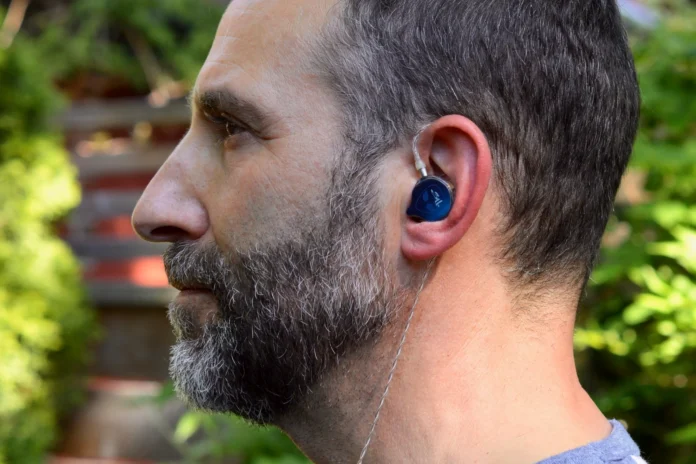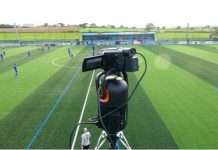Finding the perfect in-ear monitor (IEM) is more than just picking a pair that looks good—it’s about achieving the ideal blend of sound quality, comfort, and functionality to match your needs.
Whether you’re a musician seeking precision for live performances, a podcaster wanting crystal-clear playback, or an audiophile craving immersive sound, the right IEM can elevate your experience.
In this guide, we’ll walk you through the essential factors to consider, from fit and features to budget and sound profile, so you can find the IEM that’s just right for you.
Importance of Finding the Right Fit for In-Ear Monitors
The right fit for your in-ear monitors (IEMs) is essential for getting the best sound quality and comfort. A proper fit ensures that you experience clear audio, deep bass, and effective noise isolation. Without it, even the best in-ear monitors can feel uncomfortable or deliver subpar performance.
For music enthusiasts, this can make or break their listening experience, whether they are on stage, in the studio, or enjoying music at home. A snug fit helps block external noise, so they can focus on the details in their music without distractions.
It also prevents IEMs from slipping out during long sessions. Taking the time to find the perfect fit means unlocking the full potential of your IEMs and enhancing how you connect with your music.
Understanding Different Types of In-Ear Monitors
In-ear monitors (IEMs) come in a variety of types, each designed to meet different needs. As a musician, understanding these options helps you choose the best in-ear monitors for your performance or practice.
Universal-fit IEMs are pre-made to suit most ear shapes and are often more affordable. They are a good starting point if you’re new to IEMs. Custom-fit IEMs, on the other hand, are molded to your ears, providing superior comfort and noise isolation. These are ideal for long performances or studio sessions.
You’ll also find single-driver and multi-driver IEMs. Single-driver IEMs offer balanced sound, while multi-driver models enhance clarity by separating frequencies. Knowing these differences ensures you select the best in-ear monitors for you, that deliver the sound quality and comfort you need to perform at your best.
Assessing Your Needs: Performance, Studio, or Everyday Use
When choosing the best in-ear monitors, it’s essential to think about how you’ll use them. For live performances, you’ll need IEMs with excellent noise isolation and a reliable fit to block stage noise and stay secure during movement. Clear sound reproduction is also crucial so that you can hear every detail in your mix.
In a studio setting, precision matters most. Look for IEMs that deliver balanced audio to ensure accurate monitoring and mixing. If you plan to use IEMs for everyday listening, comfort and versatility are key.
Models with a more neutral sound profile and durable construction are ideal for casual use. By assessing your needs—whether for performance, studio work, or everyday listening—you’ll be able to choose IEMs that enhance your music experience in the best way possible.
Key Features to Look for in an In-Ear Monitor
Look for IEMs with a balanced or customizable sound profile to suit your style. Noise isolation is another key feature, ensuring you can hear your mix clearly without outside distractions.
Comfort is crucial for long performances, so choose IEMs with a secure and snug fit. Durability is also important—opt for models built to withstand regular use and travel. If versatility matters, consider IEMs with detachable cables or wireless options.
Multi-driver setups are excellent for more precise sound separation, especially for professional use. By focusing on these key features, you can find IEMs that deliver the performance, comfort, and reliability you need.
Exploring Sound Profiles and Audio Quality Options
When choosing the best in-ear monitors, understanding sound profiles and audio quality is essential. Sound profiles describe how the IEMs reproduce frequencies. For musicians like you, this directly affects how you hear your music.
A balanced sound profile provides equal emphasis on lows, mids, and highs, making it ideal for accurate monitoring. Bass-heavy profiles emphasize lower frequencies, which can suit drummers or bass players. Bright profiles focus on higher frequencies, highlighting vocals and lead instruments.
Multi-driver IEMs are great for separating these frequencies, offering enhanced clarity and detail. Consider how you’ll use your IEMs and what you want to hear. Whether you need rich bass, precise mids, or clear highs, selecting the right sound profile ensures your IEMs deliver audio quality that complements your performance style.
How to Measure and Choose the Right Size for Comfort
Comfort is essential when selecting the best in-ear monitors, especially for long sessions or performances. To ensure a proper fit, you need to measure and choose the right size. Start by understanding your ear shape and canal size.
Many IEMs come with multiple ear tip sizes—small, medium, and large—so you can test what works best for you. A snug fit ensures optimal noise isolation and prevents the IEMs from slipping out during movement. If standard tips don’t provide the right seal, consider foam or custom-molded tips for enhanced comfort and stability.
Take the time to test different options and ensure they don’t cause pressure or discomfort. Choosing the right size not only improves comfort but also enhances the sound quality, giving you the best experience with your in-ear monitors.
Budget Considerations: Balancing Quality and Cost
Finding the best in-ear monitors means balancing quality and cost to fit your budget. As a musician, it’s important to invest in IEMs that meet your performance needs without overspending.
Start by prioritizing features like sound quality, comfort, and durability. High-end models often offer better audio clarity and build quality, but there are also mid-range options that deliver excellent performance at a more affordable price.
Avoid compromising on essential features like noise isolation or fit, as these directly affect your experience. Consider whether you need advanced features like custom molds or multi-driver setups, which can increase costs.
By setting a clear budget and focusing on what matters most, you can find IEMs that deliver great value without breaking the bank. Choose wisely to ensure a long-lasting and satisfying investment.











